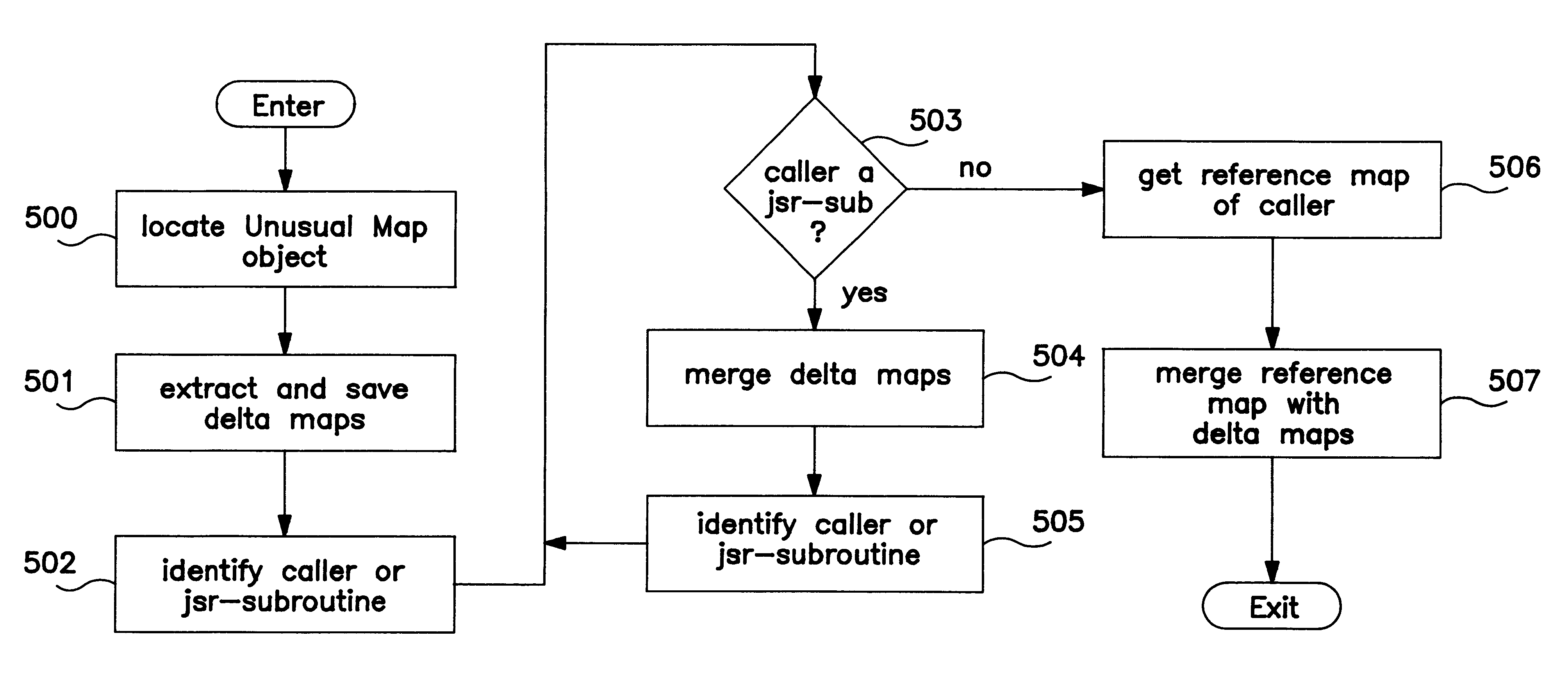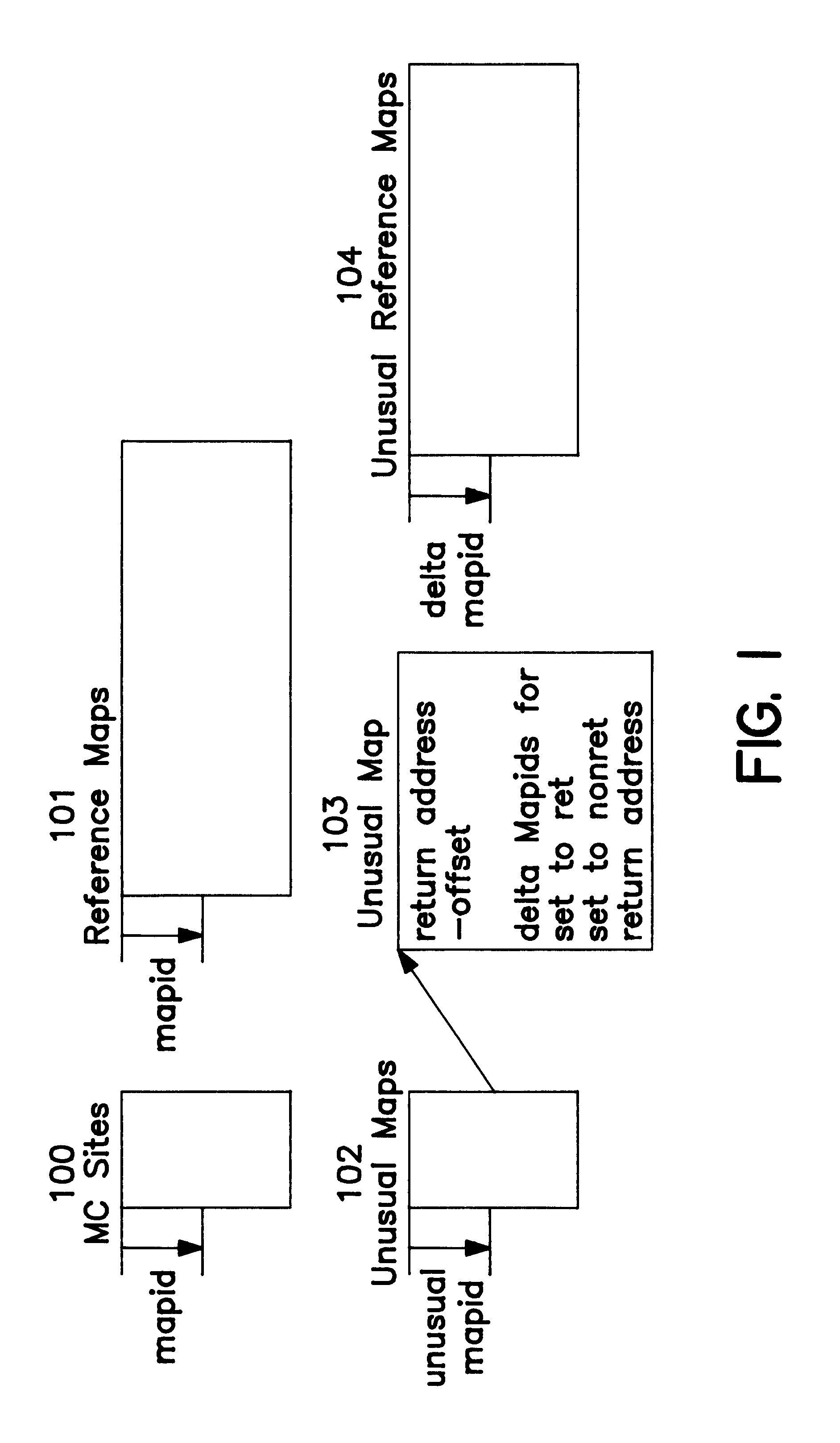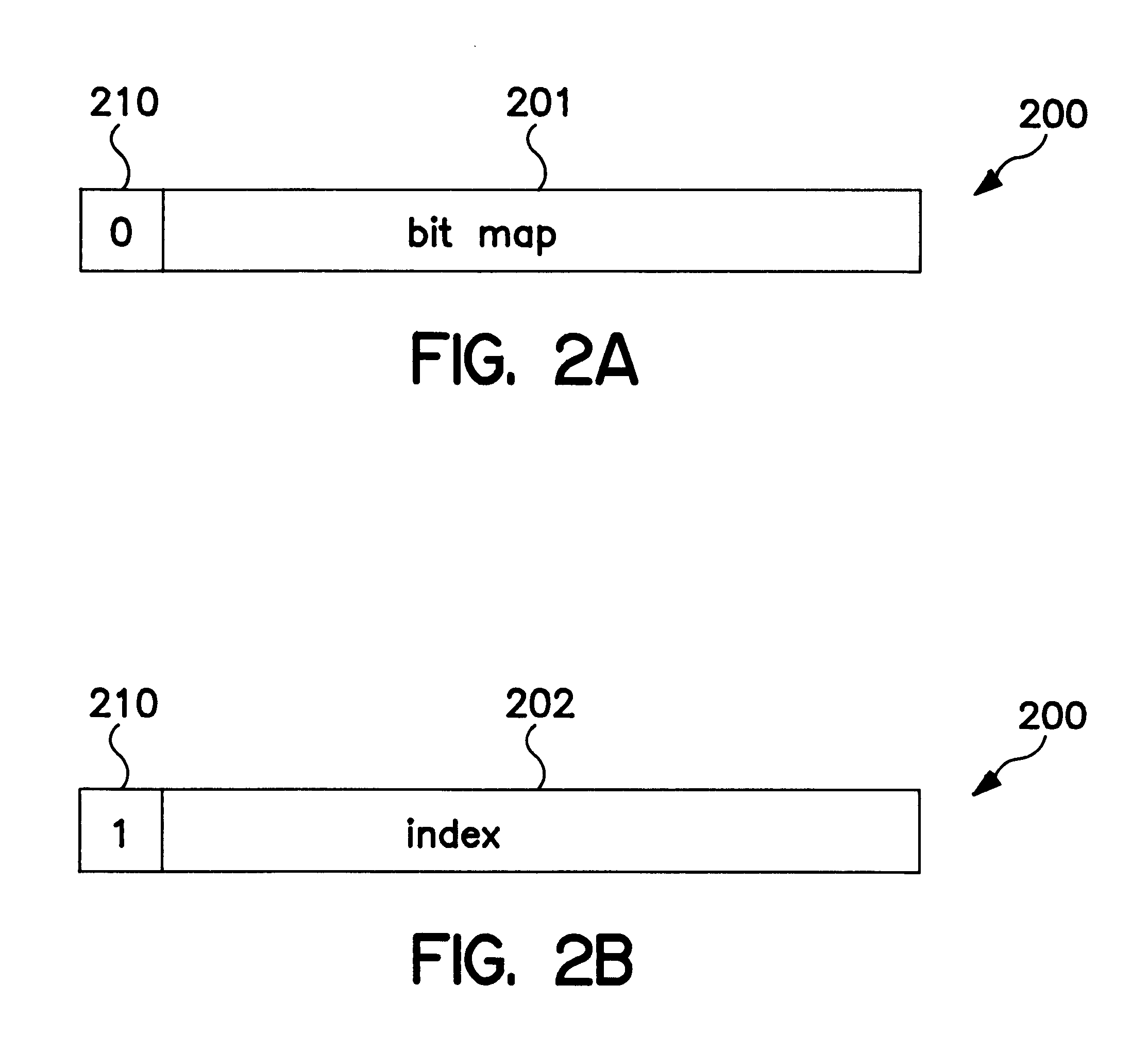Determination of local variable type and precision in the presence of subroutines
a technology of local variables and subroutines, applied in the field of determining local variable types and precision in the presence of subroutines, can solve problems such as complicated problems such as tracking local variable types, and achieve the effect of precise tracking of local variable types
- Summary
- Abstract
- Description
- Claims
- Application Information
AI Technical Summary
Benefits of technology
Problems solved by technology
Method used
Image
Examples
Embodiment Construction
An exemplary method of the invention provides a process by which the types of local variables may be determined during stack analysis. The method uses a "JSR-subroutine" call chain, a local variable base map defined at the time of an initial JSR instruction and a further local variable map, hereafter referred to as a "delta map," that reflects changes made to local variables after jumping to the JSR-subroutine.
The "JSR-subroutine" call chain is the sequence of JSR-subroutine calls executed within a method to reach the current execution point in that method. Static data flow analysis of the bytecode reveals the execution points within a method that are within a JSR-subroutine. As discussed earlier, execution of a JSR instruction places a return address (the address of the instruction after the address of the JSR instruction) on an operand stack. After the jump to the JSR-subroutine and during execution of the JSR-subroutine, that return address is saved in a local variable. Using sta...
PUM
 Login to View More
Login to View More Abstract
Description
Claims
Application Information
 Login to View More
Login to View More - R&D
- Intellectual Property
- Life Sciences
- Materials
- Tech Scout
- Unparalleled Data Quality
- Higher Quality Content
- 60% Fewer Hallucinations
Browse by: Latest US Patents, China's latest patents, Technical Efficacy Thesaurus, Application Domain, Technology Topic, Popular Technical Reports.
© 2025 PatSnap. All rights reserved.Legal|Privacy policy|Modern Slavery Act Transparency Statement|Sitemap|About US| Contact US: help@patsnap.com



